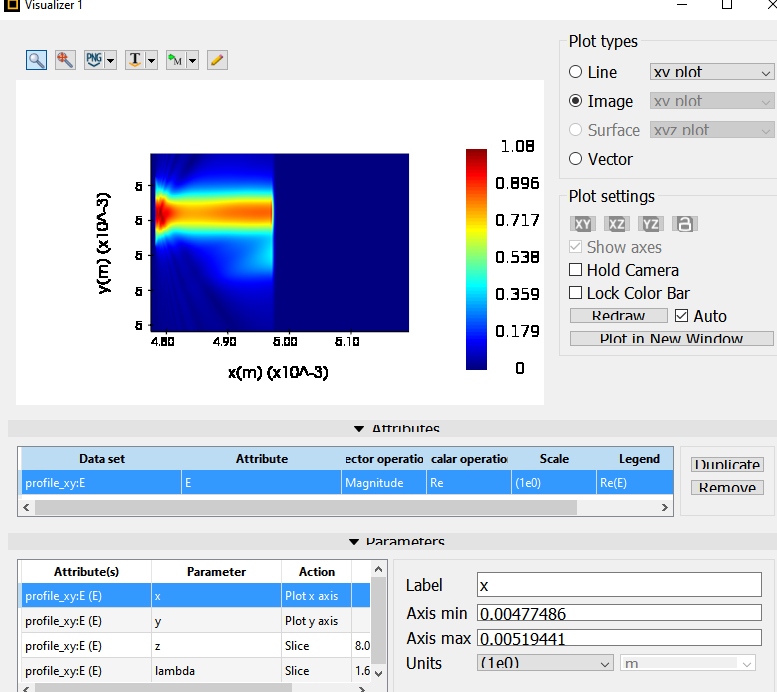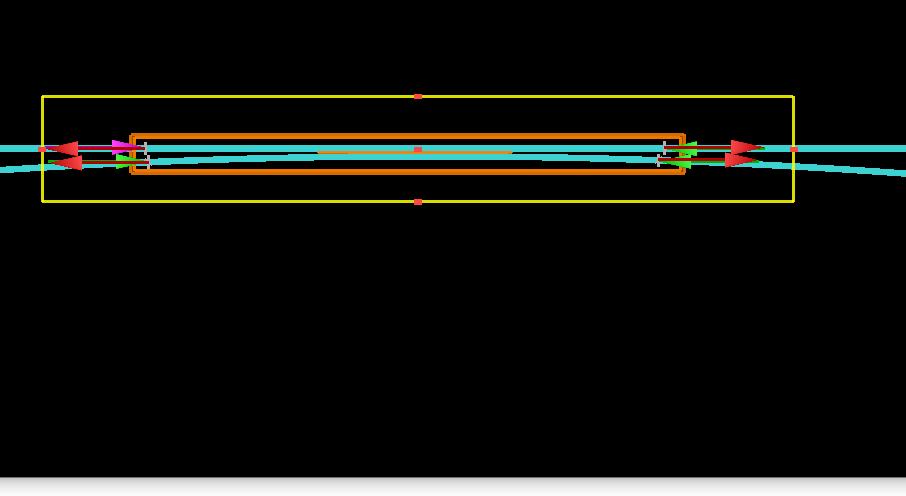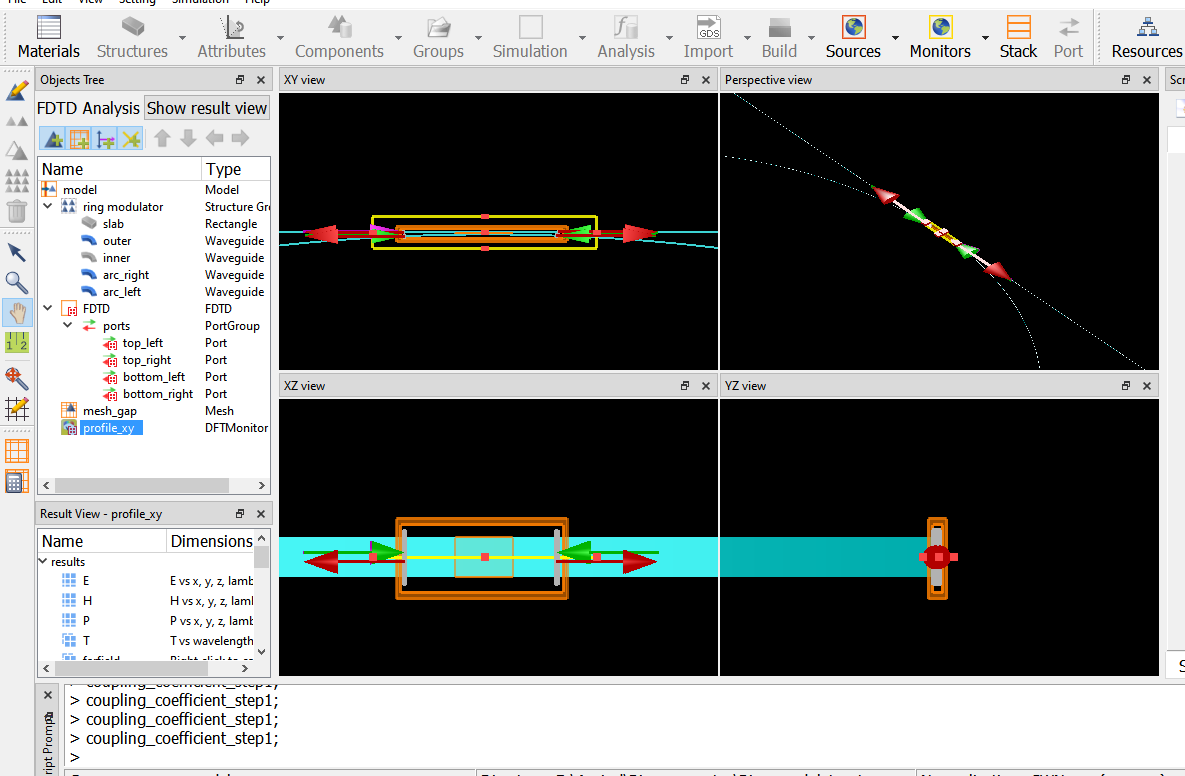-
-
February 18, 2021 at 2:27 pm
Kam Chow
Ansys Employee"I want to simulate a large ring resonator (e.g., ~100 um radius). What would be the best approach using Lumerical?"
Simulating the whole ring with a large radius using, eg, FDTD, can be computationally intensive. There are indeed couple of ways to approach this type of application.
varFDTD
Instead of using FDTD, one way to simulate the entire ring in one simulation, is to use the varFDTD solver in MODE Solutions, there is a white paper on this topic. This 2.5D solver is able to run a simulation with 3D planar structure but just require 2D computation cost. We have an example of ring resonator using the varFDTD solver. Before you run the simulation, you could take a look at the memory report and make sure you have enough computational resources to run the simulation. Another note is that you probably want to increase the “simulation time” setting in the simulation region since light will need more time to travel for this large ring. You might need more than the default 1000fs simulation time.
However, if your are going to simulation an very large ring, this approach might not be the most efficient way.
FDTD, FDE, INTERCONNECT
When the ring resonator becomes very large, it is not efficient to run an FDTD nor varFDTD simulation. Indeed, we can split the ring into multiple component simulations and import the data to INTERCONNECT for a circuit simulation. See this example for more info.
-
February 23, 2021 at 6:00 am
Shelley
Subscriber.Hi kchow ,
In general ring resonator, if I use varFDTD solver I should put the slab mode(green cross ) on the waveguide core which the light is in this. But, in some case, the light is not in waveguide core. Where I should put on the slab mode?
For example, I have a question about the slot ring resonator Because the light is in air propagation not in waveguide material.
Where I should put on the slab mode? Or this structure can not use varFDTD solver ?
. -
February 23, 2021 at 9:29 am
Kam Chow
Ansys EmployeeAccording to the documentation here (https://support.lumerical.com/hc/en-us/articles/360034916993-varFDTD-solver-Simulation-object) the green cross is used for defining the location of the vertical slab mode for reference.
We have a related example on this page that also uses varFDTD perhaps is worth looking at.
https://support.lumerical.com/hc/en-us/articles/360042304694-Evanescent-waveguide-couplers
-
September 29, 2021 at 11:07 am
renuraman
Subscriber.As mentioned in the coupling FDTD (above section), I have tried for coupling of mode from bus to ring. Here I a trying for 5mm radius of the ring . The mode is not completely entering into the ring instead cutting off during half of the of the FDTD region (in bus itself). Hence I am obtaining coupling coefficient as zero. I a trying to replicate as in the paper "146510.pdf (hindawi.com)" by using a approach as mentioned in ring modulator "Ring modulator – Lumerical Support"
I am attaching few images. Please let me now, where I am doing wrong. Simulation time is 1000fs and it taking 2 hours, shall i increase it?
. -
September 30, 2021 at 6:57 am
Kam Chow
Ansys Employee.Hello, I am not able to download the screenshots. Would you be able to post the screenshot here (similar to what we have done in the upper posts)?
If you notice that light stops half way and the simulation is done, chances are you may need more simulation time. For example, if neff = 2.5, simulation time is 1000fs, and it can approx travel 120um single pass.
If your simulation region is larger than that or it has multiple pass events then it might need more simulation time. In fact, you can refer to the coupler_region.fsp file for some reference. If testing takes too long, perhaps you can start with running some 2D simulations. It should save you a lot of time for some initial tests.
. -
October 20, 2021 at 3:59 am
renuraman
Subscriber.Thanks, by increasing simulation time it worked.
. -
October 20, 2021 at 5:38 am
Kam Chow
Ansys Employee.cool, it's good to hear that! Thank you very much for letting us know!
.
-
- The topic ‘Best approach for simulating large ring resonators’ is closed to new replies.



-
3727
-
1328
-
1163
-
1090
-
1014

© 2025 Copyright ANSYS, Inc. All rights reserved.













